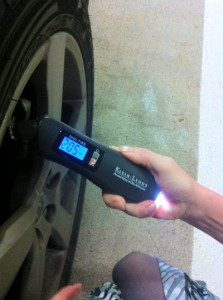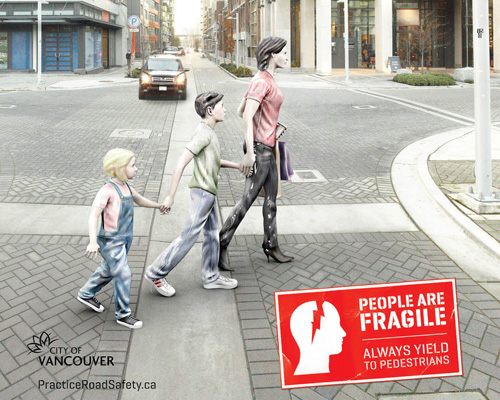
Did you know that vehicle tires are a critical element to road safety? In order for tires to perform safely, they need regular maintenance. If not maintained, tires can suddenly fail and cause you to lose control of the vehicle.
A number of years ago, I was driving down Highway 1 on my way to Kelowna on dry roads, when suddenly a huge brick appeared in my path. The car ahead of me missed it, but I was unable to swerve safely to miss the object. The impact severely damaged the left front tire and the rim. Luckily, I was able to bring the car to the side of the road and as I did, I will always remember feeling very thankful that the tires were properly maintained. That type of impact would have exploded an old, worn tire creating a greater risk of total loss of control.
Not only do good tires contribute to safety but they also improve fuel economy, expand the tire life (new tires are expensive), provide better vehicle handling and reduce exhaust emissions that contribute to environmental problems.
To keep your tires in good repair:
- Inflate tires to the proper pressure – according to Transport Canada about 50% of vehicles on the road are under-inflated, and that can lead to unexpected tire failure. Check your tire pressure frequently. This is easily done with a pressure gauge*.
- Inspect tires for wear and tear – check frequently for uneven wear and for sharp objects like nails. Take your car in to a tire shop for a quick fix if you have a nail in your tire.
- Wheel alignment and balancing – balanced tires make for a smoother ride. Tires that are out of alignment can increase fuel consumption and contribute to uneven wear, creating bald spots and suspension problems.
- Rotate your tires – back and front tires wear differently and rotating them on a regular basis can increase the longevity of the tire.
Have the Right Tire for the Weather
On the west coast of Canada it is not a common practice to change from summer to winter tires. Most vehicle owners use an ‘all-season’ or ‘all-weather tire. How do you know what is the best tire for your local driving weather conditions?
In short, all-season and summer tires lose their elasticity below 7°C, resulting in reduced traction. If you are consistently driving in colder climates where it snows frequently, it is best to put on winter tires. Shaun de Jager, Driving Instruction and Road Safety Specialist recommends, “for lower mainland drivers who generally stick to the lower altitudes, I would recommend a dedicated rain tire considering the amount rain the area receives annually. A rain tire would be far more effective at evacuating water from under the tire thus reducing hydroplaning and increasing grip on the road, when compared to a standard All-Season tire. Snow tires wouldn’t be a huge priority in the lower mainland area of B.C. since temperatures rarely fall below 7 degrees Celsius.”
The key is to keep your tires maintained for safety. If you need to buy new tires, do your research and get educated on the best tire for your regular driving conditions.
For more tire resources check out Shaun’s blog or this great article in Popular Mechanics.
FREE Give-Away – Send us a message on Facebook and win!

Klein Lawyers has 10 digital tire gauges to give away – so send us a message on Facebook with your email address and the first 10 people to respond will receive this handy gadget.










